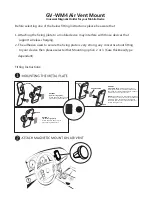
Basic Operation
2-4
Sub-Network Protocol
Protocol Modes
The gateway features two distinct modes of operation regarding the sub-network communication, called
‘Master Mode’ and ‘Generic Data Mode’. Note that the protocol mode only specifies the basic commu-
nication model, not the actual sub-network protocol.
• Master Mode
In this mode, the gateway acts as a master on the sub-network, and the serial communication
takes place in a Query-Response fashion. The nodes on the network are not permitted to issue
messages unless they have been addressed by the gateway first.
For more information about this mode, see 2-5 “Master Mode”.
• Generic Data Mode
In this mode, there is no master-slave relationship between the sub-network nodes and the gate-
way; any node on the sub-network, including the gateway, may spontaneously produce or con-
sume messages.
For more information about this mode, see 2-5 “Generic Data Mode”.
Protocol Building Blocks
The following building blocks are used in ABC Config Tool to describe the sub-network communica-
tion. How these blocks apply to the two protocol modes will be described later in this document.
• Nodes
A node represents a single device on the sub-network. Each node can be associated with a
number of Transactions, see below.
• Transactions
A ‘Transaction’ represents a complete serial telegram, and consists of a number of Frame Objects
(below). Each Transaction is associated with a set of parameters controlling how and when to
use it on the sub-network.
• Commands
Commands are simply pre-defined Transactions stored in the ABC Config Tool. This simplifies
common operations by allowing Transactions to be stored and re-used.
• Frame Objects
Frame Objects are low level entities used to compose Transactions (see above). A Frame Object
can represent a fixed value (a constant), a range of values (limit objects), a block of data or a cal-
culated checksum.
















































